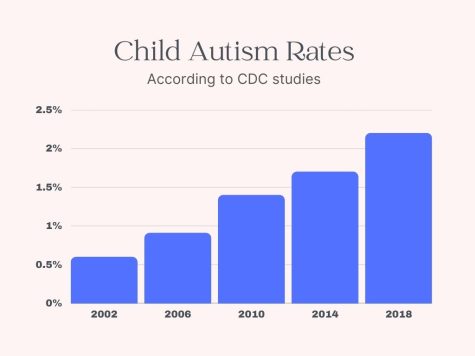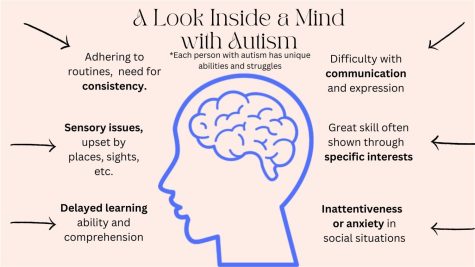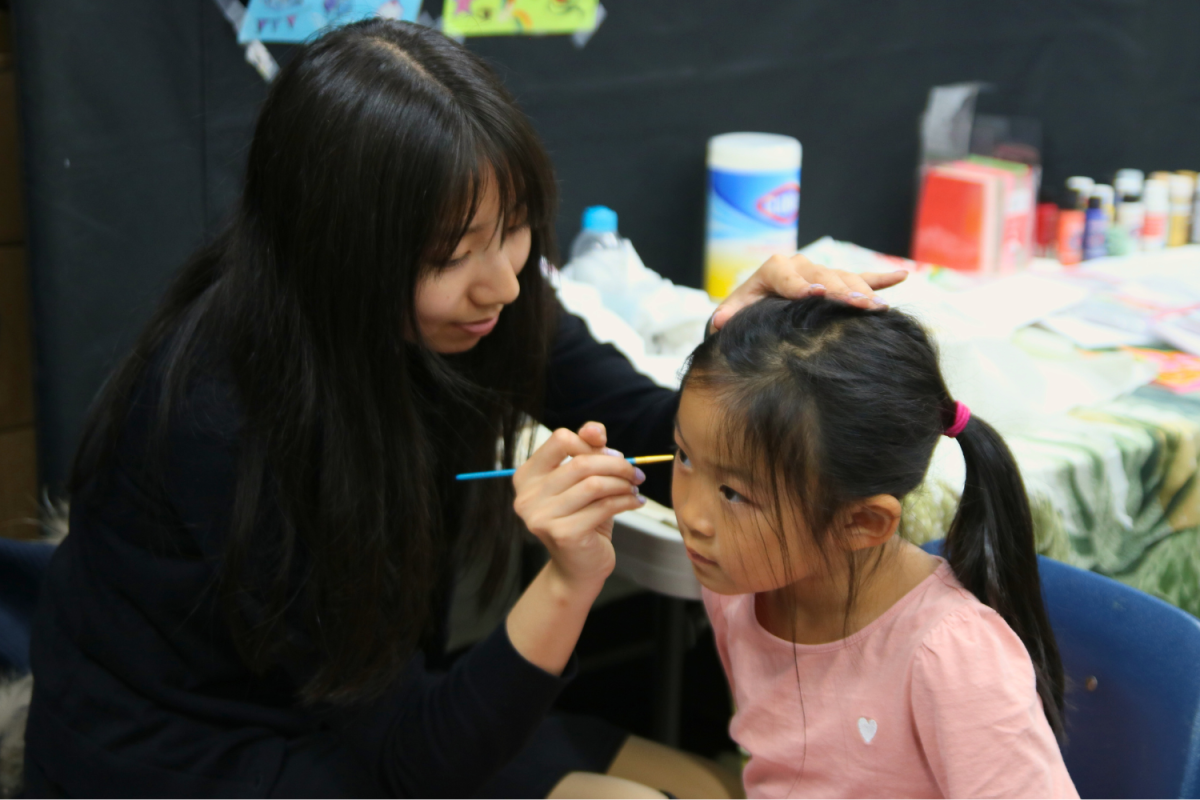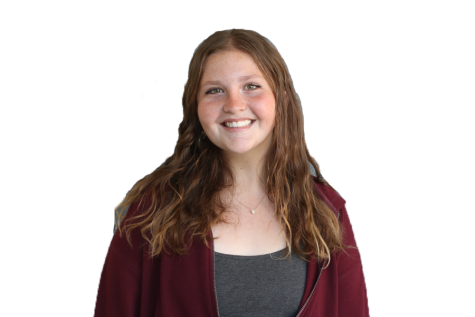One in 44.
In a room of 44 children, one is likely to have autism, according to CDC’s Autism Research.
Autism is an intellectual disability that continues to affect many people; however, those with it learn many unique traits.
Intellectual disabilities are the most common among any disability, and there are many different types. However, one of them has more diagnoses on the rise: autism spectrum disorder (ASD). Awareness of this disability is vital, as it can help identify symptoms and understand how to communicate with those who have it.
ASD impacts all ages and genders and can cause trouble in social communication, lead to restricted or repetitive behaviors, or require different needs for learning.

One main pattern of autism symptoms is trouble with social interactions. Many of those with ASD can easily get overwhelmed, confused, and unaware in social situations.
“A lot of times, some place high expectations of appropriate social behavior on individuals who have significant delays in social maturity,” said board-certified behavior analyst (BCBA) Christopher Robinson. “It’s best to proactively plan to support someone with autism in social environments.”
Despite these struggles, others can still have exemplary social skills, and the autism spectrum leaves room for uniqueness regarding one’s capabilities.
“I struggle with sensory difficulties, but I am better at communication. Another person with autism may be the complete opposite,” said autism activist Jessica Chandler. “Every autistic person struggles, but some struggle with more traits than others.”
Autism is on a spectrum, and anyone identified with it can be on any point on the scale. This spectrum helps identify the range of autism symptoms one has, as autism varies in the degree to which it impacts the mind. Often, one’s place on the spectrum is determined as “high-functioning” or “low-functioning,” expressing their abilities. However, these terms may not capture the complexities of individuals with autism.
“I don’t like ‘high-functioning’ and ‘low-functioning’ labels because when people speak to me, they may say I don’t seem autistic and that I seem high-functioning. However, when I am having a meltdown, people will act as if I am low-functioning,” Chandler said.
Each person with ASD has strong reactions or habits that reflect their diagnosis, but it is important to note that those behaviors are not always prevalent in every situation.
Over time, autism cases have risen consistently as more studies are being conducted yearly to identify autism rates. The rising number of autism cases does not only imply a rise in autism itself but also an increase in general knowledge about autism.
Many see the rise in cases of autism as extremely concerning and problematic, and the concern reflects the negative stigma around autism. As a result, many generalizations are made about people with autism.
“There are stereotypical things, like people saying that I don’t look autistic,” Chandler said.
When some people view autism as an entirely negative disability, they look past the possible positives of having ASD.
It is such a misunderstood community…when most people think about autism, they picture a 5-year-old boy in a grocery store having a meltdown, which is not the case.
— Jessica Chandler
“Being autistic helps me with challenges or patterns others may not notice or realize. I can pick up things so easily,” Chandler said. “There are certainly some annoying things about dealing with autism, but it is a different way of thinking and processing.”
A large number of individuals with ASD are known to excel in particular areas, whether it is a hobby or an academic interest. These interests spark a great deal of intellectual curiosity, allowing individuals to display their great intelligence in their specific interests.
“People with autism are more likely to pay attention to details than neurotypicals. They are more likely to adhere to routines. These traits, as well as others, can certainly be used in ways that are meaningful,” Robinson said.
The term “neurotypical” is for someone who does not show signals of autism or atypical intellectual patterns. The term “neurodivergent” refers to someone who differs in neurological function and behavior and is often used for those with autism.
The negative ideas surrounding autism directly translate into how it impacts the lives, community, and treatment of those with ASD. There are many generalizations in terms of what autism is and how it affects them. For example, many people believe that people with autism are incapable of any understanding or complexity.
“The one thing I wish people didn’t do is speaking down to us. The minute that I say I am autistic, it seems like they speak to me like a child,” Chandler said.
However, having normal abilities does not mean that accommodations are not necessary for many situations. People with ASD experience and struggle with various intellectual and behavioral setbacks. However, no matter one’s place on the spectrum, each individual with autism is capable of great intelligence and skills.
“I absolutely do not see autism as a disadvantage. Intelligence is underestimated in people with autism,” Robinson said. “A lot of the traits that we try to ‘fix’ in people with autism are actually strengths.”
However, a big challenge of having autism is dealing with meltdowns. Meltdowns can result from an inability to communicate wants and needs, along with sensory difficulties. This extreme emotion can erupt into a meltdown or a panic mode in reaction to the trigger of the meltdown.
“Someone who hits another person might be saying, ‘I want attention but I don’t know how to appropriately gain someone’s attention,'” Robinson said.
According to the National Autistic Society, meltdowns can include crying, hitting, screaming, and extreme emotional responses. When one experiences a meltdown, patience and assistance are required to calm down. It is important to note that meltdowns are not temper tantrums or bad behavior; they are simply responses to overwhelming situations that lead to temporary loss of control.
Meltdowns can happen anywhere and impact anyone on the autism spectrum.
“In the midst of a meltdown, it is much harder to communicate,” Robinson said.

Autism is a very complex disability with its ups and downs, and research continues to unfold its mysteries. Moving forward, an increase in the awareness of autism symptoms benefits the treatment of people with autism and helps people realize their own or others’ symptoms.
“It’s important to raise awareness to help others get diagnosed and just to support the community,” Chandler said.
It is also important to move forward as a society to make it easier for neurodivergent people to thrive.
“The biggest challenge for the autistic community is being neurodiverse while navigating a world that is set up for neurotypical people,” Robinson said.
According to the CDC, there are many ways to assist people with autism using different treatments and educational pathways to make it easier for them to communicate, learn, and socialize. There are also tips for clear ways of communicating with people with ASD, which can be very helpful to interact with neurotypical people.
“Think of a wheelchair ramp. Having a wheelchair ramp doesn’t hurt anyone. It only helps everyone get to their destination, while not having one only allows a certain group of people to get to their destination,” Robinson said. “The same can be true if we, the general public, became more neurodiverse friendly.”


































I disagree • Mar 24, 2023 at 12:30 pm
I’m on the spectrum and I personally am not in agreement with this article. Sure some folks want acceptance, but I wanna leave the spectrum.